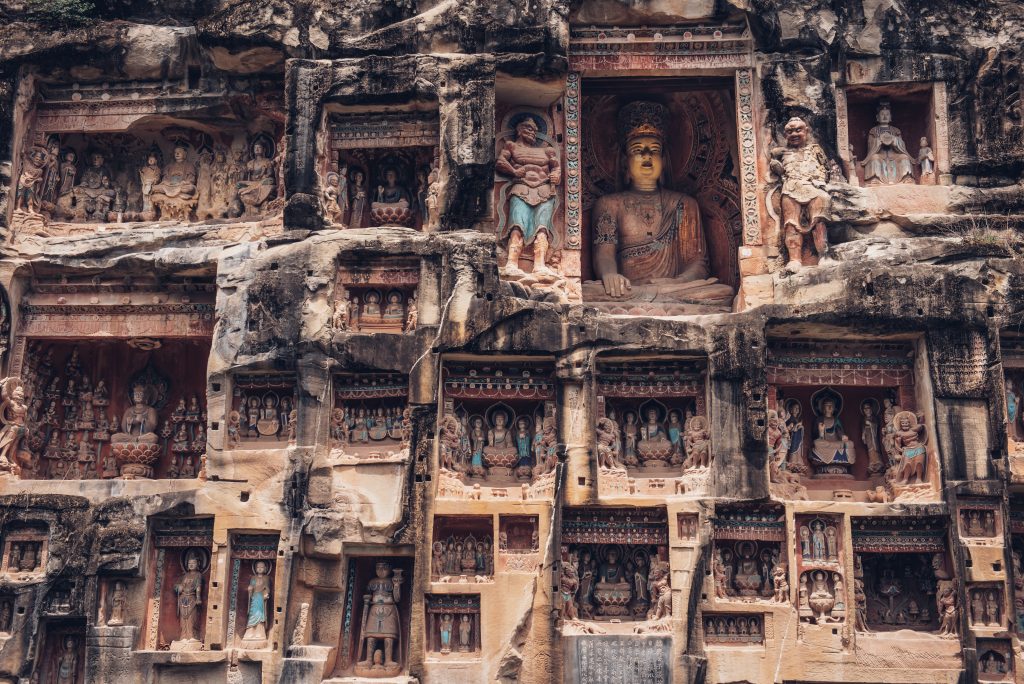Seeking Protection: The Construction of a Vaiśravaṇa Niche in the Tang Huichang Era

The Huichang Buddhist Persecution stands as one of the most devastating anti-Buddhist campaigns in Chinese history. During Emperor Wuzong’s reign of a brief six years in the late Tang dynasty, he forcefully implemented policies that led to the destruction of a considerable number of Buddhist monasteries, compelled numerous monks to return to secular life, and inflicted severe damage to the Dharma. Yet remarkably, during the climax of this persecution in the sixth year of the Huichang era, a local official in Sichuan – the Governor of Ba County, Zheng Gong – commissioned the construction of a Vaiśravaṇa niche in the Bazhong Grottoes alongside the Micang Road.
This paper examines this unusual niche by focusing on three key questions. First, what motivated a late Tang government official to publicly challenge the imperial order by commissioning a Buddhist niche during a period of intense persecution? Second, what purposes and intentions lay behind his decision to create a niche specifically dedicated to Vaiśravaṇa? Third, what role did Vaiśravaṇa play in this context, and what Buddhist characteristics did the deity embody?
By analyzing inscriptions and historical sources, the study investigates the identity of Governor Zheng Gong and conducts a thorough inspection of the Vaiśravaṇa niche. Situating the statue within its tangled historical context, the research reveals that the niche not only serves as material evidence of foreign threats to the southwestern frontier in the late Tang but also reflects a subtle political shift toward Buddhism in the final years of the Huichang era. Furthermore, the study illustrates that the niche embodies Zheng Gong’s dual expression of political ideology and religious devotion. Here, Vaiśravaṇa manifests simultaneously as two interconnected roles: a guardian deity protecting the state and its people, and a dharma defender upholding Buddhist teachings and monastic communities.
Lastly, the study turns to question the social context of Vaiśravaṇa and its patronage. As a protective deity, Vaiśravaṇa long has been cnsidered to carry esoteric nature. However, miraculous stories compiled during the Tang dynasty as well as the inscriptions from Zheng Gong’s niche, suggest a more secular understanding of the deity. The patron’s devotion to Vaiśravaṇa displays no esotericism, but rather a cultural logic of ‘Buddhism as form, Confucianism as essence’, transforming the Buddhist guardian into a divine entity within the Confucian system.
Bio
Guochen Zhou received his Bachelor’s degree in Art History from Sichuan Fine Arts Institute. He is currently in his first year of the two-year Research Master’s program in Asian Studies at Leiden University. With more than four years of research experience in Chinese Buddhist art history, his primary focus is on Buddhist cave arts in Southwest China, particularly in Sichuan and Chongqing. His Master’s thesis, titled The Indigenization Process and Iconographic Transformation of Buddhist Sculptures in Sichuan and Chongqing, mainly aims to shed light on how regional influences shaped Buddhist visual culture in medieval China. By emphasizing the impact of indigenous sūtras, Buddhist rituals, and patronage preferences, he examines the processes of secularization and indigenization that emerged during the Tang and Song dynasties, and their facilitation on the iconographic transformation.
